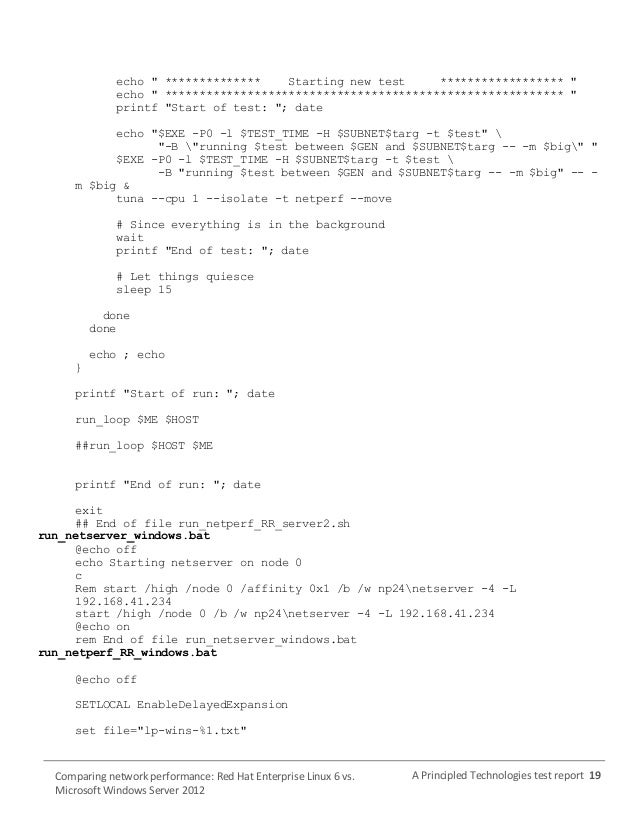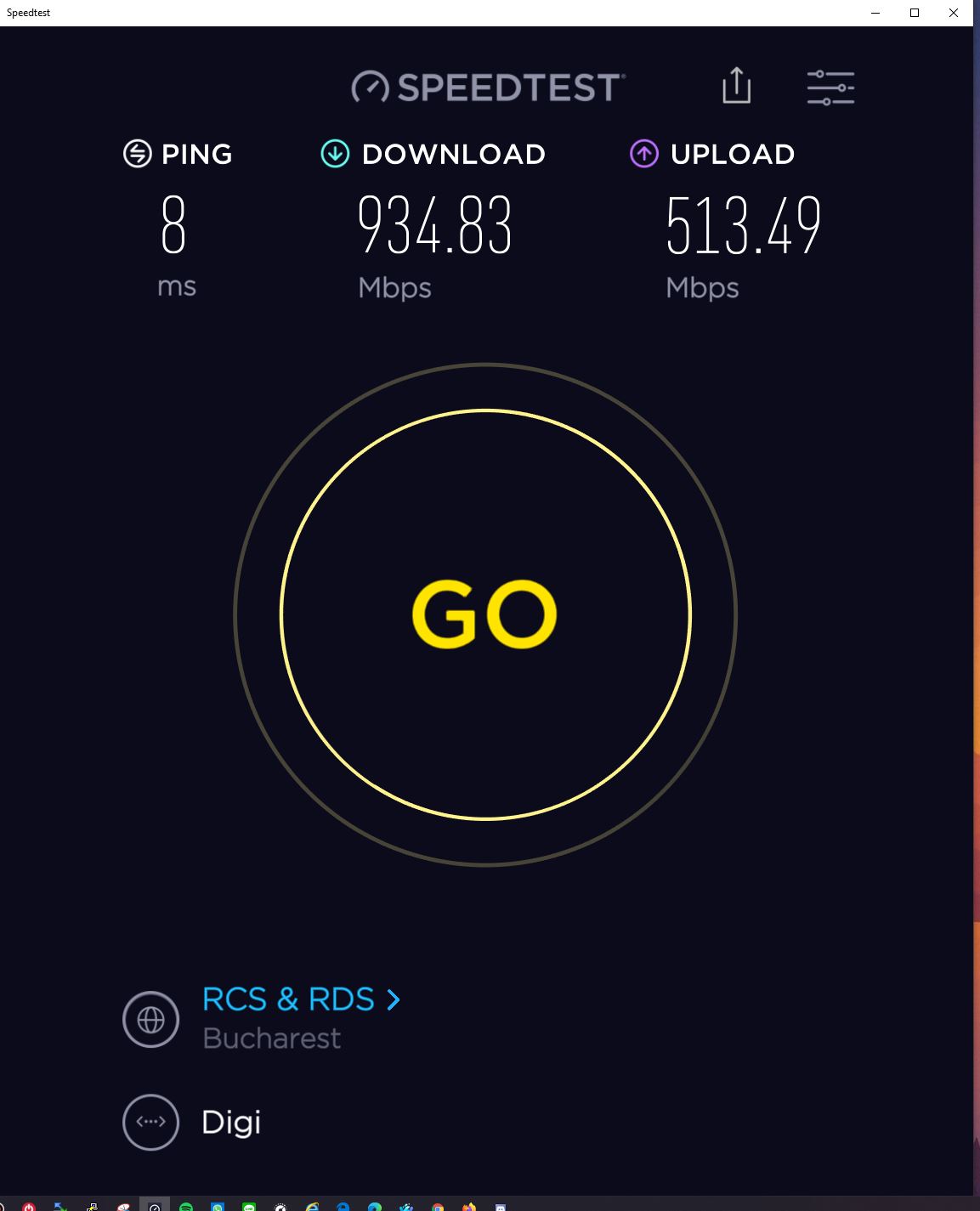- Netperf Download Windows
- Netperf For Arm
- Install Netperf On Windows 8
- Install Netperf On Windows 8
- Install Netperf On Windows 7
IPerf3 binaries for Windows, Linux, MacOS X. Install Iperf 3.9 via the command line: Packages are manually installed via the dpkg command (Debian Package Management System). Dpkg is the backend to commands like apt and aptitude, which in turn are the backend for GUI install apps like the Software Center and Synaptic. Download Netperf Clone or download various revisions of the Netperf benchmark. Netperf Numbers Submit and Retrieve Netperf results from the Netperf Database. Netperf Training View the Netperf manual or whitepapers on using Netperf. Netperf Feedback Provide feedback on the benchmark or the pages.


Download: http://www.chriswolf.com/download/netperf.zip
Bottleneck Battle

When you suspect a performance problem is related to a network bottleneck, use this simple tool to verify your suspicions.
- By Chris Wolf
- 09/13/2005
Netperf Download Windows
Chris: I have often found myself having to deal with customers with slow networks that believe their networks are fine. Just last week I was at a site and the customer was insistent that slow performance was related to a software bug in the product I was installing. Is there an easy way to definitively identify a network bottleneck so that both the engineer and customer can be confident in the source of the problem?--Jim
Jim: At first I was hesitant to answer your question. Finger pointing has been a long standing tradition in IT, and I wasn’t sure that I wanted to do anything to upset that delicate balance. Many of my friends like to 'blame the other guy' when they find themselves in a jam. This gives them a few hours (or sometimes even days!) to solve a problem while the customer verifies that it isn’t with another vendor.
Now before all of you jump down my throat, I am not condoning this behavior! While blaming the other guy could be used as a diversion tactic, most administrators are often very confident in their abilities and, as a result, find in hard to believe that a performance problem exists on their network. When you find yourself in this situation and are looking to narrow down the cause of a problem, I have had a lot of success using the open source tool Netperf, which was developed by HP engineer Rick Jones. Netperf is a light-weight vendor neutral tool that will give you instantaneous network throughput between two points.
|
The latest version of Netperf can be downloaded from the official Netperf site. Note that the download site will provide access to the Netperf source code. You will need to compile it in order to run it. Netperf can be successfully compiled to run on Windows, Unix or Linux. If you’re not in a compiling kind of mood, you can download a compiled copy of the netperf tools from my Web site.
Run netserver.exe on one system and netclient.exe on the other system to arrive at a throughput value between the two systems.

Netperf For Arm
By default, when you run Netserver, it uses port 12865. With the –p switch, you can specify a different port for the command to use. Once executed, Netserver will continue to run until a client connects to it.
While there are numerous options that accompany the Netclient command, for performing throughput tests, you only need to be concerned with –H and possibly –p if testing throughput between two remote sites through a firewall. If you’re interested in the numerous other switches available with Netperf, go here.
Once you have the netserver.exe file on one system and the netclient.exe file on the second system, you would perform these steps to test throughput:
1. On the first system, access the command prompt and run netserver.exe (you must run the command from the folder where it resides).
2. From the second system, run netclient.exe –H from the command prompt.
Wait a few seconds and you will see the throughput information displayed on the system that ran Netclient. You will also see the netserver command execution automatically terminate on the first system.
Here is a sample of the command and resultant output from running Netclient:
Install Netperf On Windows 8
G:Netperf>netclient -H fs1.mcpmag.com
TCP STREAM TEST to fs1.mcpmag.com
Recv Send Send
Socket Socket Message Elapsed
Size Size Size Time Throughput
bytes bytes bytes secs. 10^6bits/sec
Install Netperf On Windows 8
8192 64512 64512 10.00 97.30
In my example, I first went to the server named fs1.mcpmag.com and ran the command netserver.exe. I then went to another system and ran 'netclient –H fs1.mcpmag.com.' The resultant throughput between the two systems was 97.3 Mbps. This demonstrated that the 100Mbps LAN connecting the two systems was running fine. A low throughput value would identify a network bottleneck. At that point, you would need to go through the usual suspects (NIC drivers, duplex mode, speed, switch settings, etc.) to determine the root cause of the problem.
If you are having to install network software on another organization’s network, Netperf can quickly give you a throughput measurement that will allow you to either identify or rule out the network as being problem. I like Netperf because I can run in on nearly any OS. I’m sure that many of you have a favorite network performance testing tool. If so, please share the love and post information about the tool as a comment to this column.
About the Author
Install Netperf On Windows 7
Chris Wolf is a Microsoft MVP for Windows --Virtual Machine and is a MCSE, MCT, and CCNA. He's a Senior Analyst for Burton Group who specializes in the areas of virtualization solutions, high availability, storage and enterprise management. Chris is the author of Virtualization: From the Desktop to the Enterprise (Apress), Troubleshooting Microsoft Technologies (Addison Wesley), and a contributor to theWindows Server 2003 Deployment Kit (Microsoft Press).learningstore-20/'>Troubleshooting Microsoft Technologies (Addison Wesley) and a contributor to the Windows Server 2003 Deployment Kit (Microsoft Press).